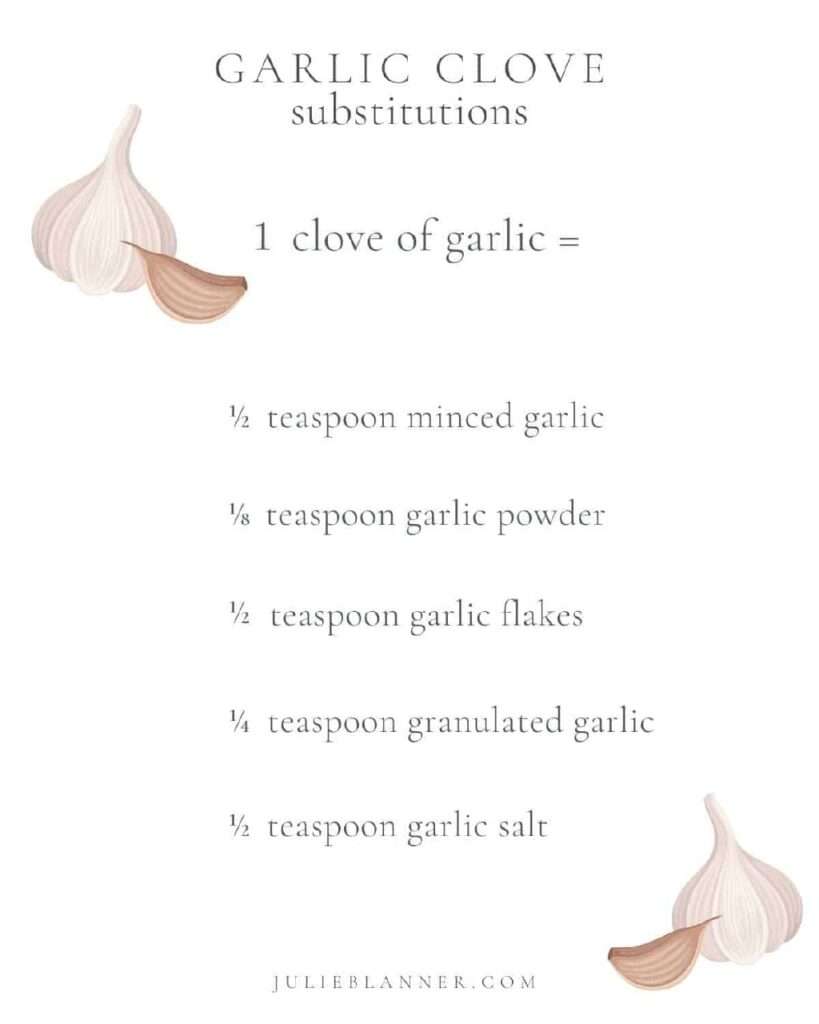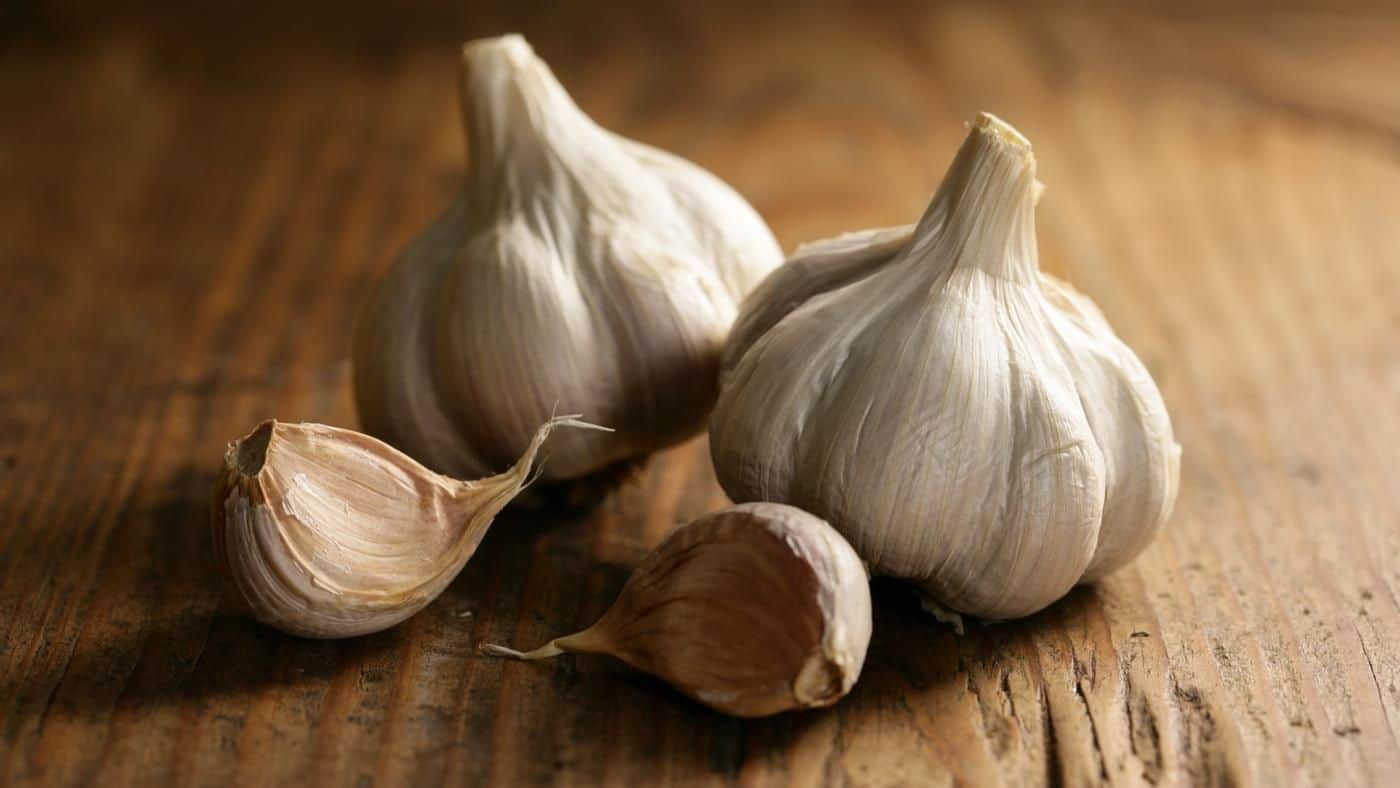Garlic is a staple in many kitchens around the world, adding depth and flavor to countless dishes. Whether you're using fresh garlic cloves or garlic powder, understanding the conversion between the two is essential for precise cooking. If you've ever wondered how much garlic powder equals 1 clove, this article will provide you with all the information you need.
Cooking with garlic can sometimes be tricky, especially when recipes call for fresh garlic but you only have garlic powder on hand. Knowing the correct conversion ensures that your dishes turn out perfectly every time. This guide will help you understand the differences between fresh garlic and garlic powder, and how to substitute one for the other effectively.
Whether you're a seasoned chef or a home cook looking to improve your culinary skills, this article will walk you through the essential details of garlic powder substitution. By the end, you'll have a clear understanding of how to use garlic powder as a reliable alternative to fresh garlic cloves.
Read also:Is Bill Hemmer Married Discovering The Personal Life Of The Renowned Journalist
Understanding Garlic Powder and Fresh Garlic
Before diving into the specifics of how much garlic powder equals 1 clove, it's important to understand the differences between fresh garlic and garlic powder. Garlic powder is made by dehydrating fresh garlic cloves and grinding them into a fine powder. This process concentrates the flavor, making garlic powder more potent than fresh garlic.
Key Characteristics of Garlic Powder
Garlic powder has several advantages over fresh garlic:
- It has a longer shelf life, making it convenient for long-term storage.
- It's easier to measure and use, especially in recipes that require precise amounts.
- It provides a consistent flavor, which can be beneficial for large-scale cooking.
How Much Garlic Powder Equals 1 Clove?
When substituting garlic powder for fresh garlic, the general rule of thumb is that 1/8 teaspoon of garlic powder equals 1 clove of fresh garlic. However, this conversion can vary slightly depending on the size of the garlic clove and the potency of the garlic powder.
Factors That Affect Conversion
Several factors can influence the conversion ratio between garlic powder and fresh garlic:
- Size of the Garlic Clove: Larger cloves contain more garlic flavor, so you may need slightly more garlic powder to match the intensity.
- Potency of Garlic Powder: Some brands of garlic powder are more potent than others, so it's important to consider the brand when making substitutions.
- Recipe Requirements: Certain recipes may call for a stronger garlic flavor, which could necessitate adjusting the conversion ratio.
Converting Garlic Powder to Fresh Garlic
If you're working with a recipe that calls for garlic powder but you prefer to use fresh garlic, you can reverse the conversion. For every 1/8 teaspoon of garlic powder, you can substitute 1 clove of fresh garlic. This ensures that your dish retains the desired level of garlic flavor.
Tips for Using Fresh Garlic
When using fresh garlic, keep these tips in mind:
Read also:Foolio Face Aftermath Understanding The Impact And Consequences
- Peel the cloves carefully to avoid bruising the garlic.
- Chop or mince the garlic finely to release its full flavor.
- Toast garlic lightly in oil to enhance its aroma and reduce its sharpness.
Garlic Powder in Recipes
Garlic powder is a versatile ingredient that can be used in a variety of recipes. From marinades to spice rubs, it adds a concentrated garlic flavor that complements many dishes.
Popular Uses of Garlic Powder
Here are some common ways to use garlic powder in cooking:
- Seasoning for roasted vegetables
- Ingredient in homemade dressings and sauces
- Component of spice blends for meats and poultry
Health Benefits of Garlic
Garlic is not only a flavorful ingredient but also offers numerous health benefits. Both fresh garlic and garlic powder contain compounds that support overall well-being.
Nutritional Value of Garlic
Garlic is rich in vitamins and minerals, including:
- Vitamin C
- Manganese
- Selenium
These nutrients contribute to its antioxidant properties and potential health benefits, such as boosting immune function and reducing inflammation.
Storage Tips for Garlic Powder
Proper storage is key to maintaining the quality and potency of garlic powder. Follow these tips to ensure your garlic powder stays fresh:
Best Practices for Storing Garlic Powder
- Keep garlic powder in an airtight container.
- Store it in a cool, dry place away from direct sunlight.
- Check the expiration date regularly to ensure freshness.
Substituting Garlic Powder in Recipes
When substituting garlic powder for fresh garlic, it's important to consider the recipe's requirements and adjust the amount accordingly. Here are some guidelines for common recipe substitutions:
Common Substitution Ratios
- For soups and stews: Use 1/8 teaspoon of garlic powder per clove.
- For marinades: Adjust the amount based on the desired intensity of flavor.
- For baking: Use garlic powder sparingly to avoid overpowering other flavors.
Garlic Powder vs. Other Garlic Forms
Besides garlic powder, there are other forms of garlic available, such as granulated garlic, garlic salt, and garlic flakes. Each form has its own characteristics and uses in cooking.
Comparison of Garlic Forms
- Garlic Powder: Fine texture, concentrated flavor.
- Granulated Garlic: Coarser texture, slightly milder flavor.
- Garlic Salt: Combination of garlic powder and salt, ideal for seasoning.
Recipes Featuring Garlic Powder
Here are a few delicious recipes that make great use of garlic powder:
1. Garlic Parmesan Roasted Potatoes
Ingredients:
- 2 lbs baby potatoes
- 2 tbsp olive oil
- 1 tsp garlic powder
- 1/2 cup grated Parmesan cheese
- Salt and pepper to taste
Instructions:
- Preheat the oven to 400°F (200°C).
- Toss the potatoes with olive oil, garlic powder, salt, and pepper.
- Spread the potatoes on a baking sheet and roast for 25-30 minutes.
- Sprinkle with Parmesan cheese during the last 5 minutes of baking.
2. Garlic Herb Chicken
Ingredients:
- 4 chicken breasts
- 1 tbsp garlic powder
- 1 tsp dried rosemary
- 1 tsp dried thyme
- 2 tbsp olive oil
- Salt and pepper to taste
Instructions:
- Preheat the oven to 375°F (190°C).
- Mix garlic powder, rosemary, thyme, salt, and pepper in a small bowl.
- Coat the chicken breasts with olive oil and sprinkle the spice mixture evenly.
- Bake for 25-30 minutes or until the chicken is cooked through.
Conclusion
In conclusion, understanding how much garlic powder equals 1 clove is crucial for accurate cooking and flavoring. By following the guidelines provided in this article, you can confidently substitute garlic powder for fresh garlic in your recipes. Remember to consider factors such as clove size, powder potency, and recipe requirements when making substitutions.
We encourage you to try the recipes featured in this article and share your results in the comments below. For more cooking tips and delicious recipes, explore our other articles on the site. Happy cooking!
Table of Contents
- Understanding Garlic Powder and Fresh Garlic
- How Much Garlic Powder Equals 1 Clove?
- Converting Garlic Powder to Fresh Garlic
- Garlic Powder in Recipes
- Health Benefits of Garlic
- Storage Tips for Garlic Powder
- Substituting Garlic Powder in Recipes
- Garlic Powder vs. Other Garlic Forms
- Recipes Featuring Garlic Powder
- Conclusion


